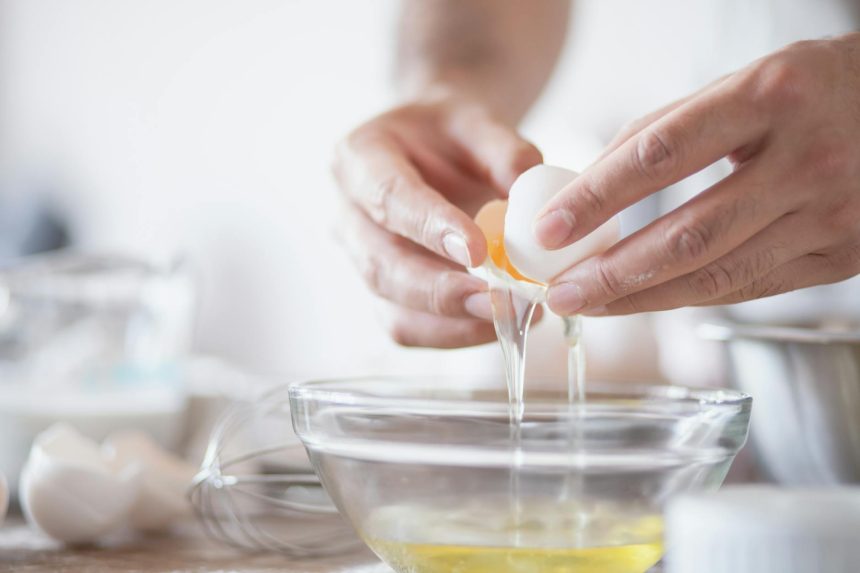how-to-separate-egg-yolks-and-whites
How to Separate Egg Yolks and Whites: 7 Expert Tips for Perfect Results
Achieving culinary precision often hinges on seemingly simple tasks, and few are as fundamental yet frequently misunderstood as cleanly **how to separate egg yolks and whites**. Whether you’re whipping up a delicate meringue, crafting a rich hollandaise, or baking a fluffy angel food cake, the integrity of your separated egg components is paramount. Many home cooks struggle with broken yolks or inefficient methods, leading to wasted ingredients and frustration. This comprehensive guide will equip you with expert techniques and invaluable tips to master egg separation, ensuring flawless results every single time you step into the kitchen.
Why Perfect Egg Separation Matters in Your Cooking
The ability to cleanly separate eggs isn’t just a fancy kitchen trick; it’s a foundational skill that unlocks a world of culinary possibilities. The distinct properties of egg whites (primarily protein and water) and egg yolks (rich in fat, protein, and emulsifiers) make them indispensable for different purposes.
The Science Behind Egg Components
Egg whites, or albumen, are mostly protein and water, allowing them to form stable foams when aerated. This property is crucial for creating light textures in baked goods. Conversely, egg yolks are packed with fat and lecithin, a powerful emulsifier, which provides richness, color, and structure to sauces and custards. Understanding these differences highlights why keeping them distinct is so important for specific recipes.
Common Culinary Uses for Separated Eggs
Many classic dishes rely entirely on perfectly separated eggs. Meringues, soufflés, and macarons demand pure egg whites for their airy structure. Conversely, custards, mayonnaise, and rich pasta carbonara often call for yolks to achieve their desired creaminess and binding qualities. Therefore, mastering this technique is a direct path to elevating your cooking and baking.
Mastering How to Separate Egg Yolks and Whites: Essential Techniques
There are several reliable methods to **how to separate egg yolks and whites**, each with its own advantages. Experiment to find the one that feels most comfortable and efficient for you. Precision is key, regardless of your chosen approach.
Method 1: The Shell-to-Shell Technique
This traditional method involves cracking an egg in half and gently passing the yolk back and forth between the two shell halves, allowing the white to drip into a bowl below. It requires a steady hand and a bit of practice. Ensure your shells have clean breaks to avoid sharp edges puncturing the yolk.
Method 2: The Hand Method (No Tools Needed!)
For a quick and efficient approach, crack the egg into your clean hand. Gently spread your fingers slightly, allowing the white to slip through into a bowl below while the yolk remains cupped in your palm. This method is incredibly effective and minimizes the risk of shell fragments.
Method 3: Using a Specialized Egg Separator
Various kitchen gadgets are designed specifically for egg separation. These often feature a small cup or basin with slots, allowing the white to drain while holding the yolk. They are particularly useful for beginners or when separating large quantities of eggs. Look for one that’s easy to clean.
Method 4: The Water Bottle Trick
This ingenious hack involves cracking an egg into a shallow bowl. Then, gently squeeze an empty plastic water bottle, position its opening over the yolk, and release the squeeze. The suction will effortlessly lift the yolk into the bottle, leaving the white behind. This can be surprisingly effective and entertaining.
7 Expert Tips for Flawless Egg Separation Every Time
Beyond the basic techniques, a few insider tips can significantly improve your egg separation success rate. These small adjustments make a big difference in achieving culinary precision.
- Use Cold Eggs: Eggs straight from the refrigerator are firmer, making the yolk membrane less likely to break. Let them warm up slightly to room temperature *after* separation if your recipe calls for it.
- Work with Fresh Eggs: Fresher eggs have a thicker albumen (white) and a stronger vitelline membrane around the yolk, which makes them easier to separate cleanly.
- Ensure All Equipment is Spotlessly Clean: Even a tiny speck of grease or oil on your bowls or hands can prevent egg whites from whipping up properly.
- Separate Eggs Individually: Always crack and separate each egg into a small, separate bowl first. This way, if a yolk breaks, it doesn’t contaminate the entire batch of whites.
- Avoid Shell Fragments: If a piece of shell falls into your egg, use a larger piece of shell to scoop it out. The shell acts like a magnet for other shell bits.
- Keep Yolks Away from Whites: Even a tiny amount of yolk (fat) can prevent egg whites from reaching their full volume when whipped. Be meticulous!
- Wash Your Hands Thoroughly: Before and after handling eggs, ensure your hands are clean to prevent contamination and ensure optimal results.
Common Mistakes to Avoid When Separating Eggs
Even with the right techniques, small errors can derail your efforts. Being aware of these common pitfalls can save you time and ingredients.
- **Breaking the Yolk:** The most common mistake. This often happens due to aggressive handling or using warm, older eggs.
- **Contaminating Whites with Yolk:** A tiny bit of yolk will prevent whites from whipping into stiff peaks. Always separate into a separate bowl first.
- **Using Greasy Bowls or Utensils:** Fat residues inhibit the foaming properties of egg whites. Ensure everything is thoroughly washed and dried.
- **Separating Too Many Eggs at Once:** Attempting to separate a dozen eggs into one bowl risks a domino effect if one yolk breaks.
- **Not Washing Hands:** Transferring oils or other substances from your hands to the eggs can compromise the separation process and the final dish.
For more insights into the science of cooking and baking, consider exploring resources like Serious Eats’ The Food Lab, which offers a deep dive into culinary principles.
Advanced Applications: Recipes That Rely on Separated Eggs
Once you’ve mastered the art of separating eggs, a world of culinary delights opens up. Here are just a couple of examples where this skill is indispensable.
Baking Delights: Meringues and Angel Food Cakes
Pure, uncontaminated egg whites are the foundation for light and airy meringues, pavlovas, and angel food cakes. Whipped to perfection, they create the structure that gives these desserts their signature texture. Without clean separation, achieving these results is nearly impossible.
Savory Creations: Hollandaise and Mayonnaise
On the savory side, egg yolks are the star. They provide the emulsifying power for creamy sauces like hollandaise and mayonnaise, binding oil and liquid into a smooth, stable emulsion. The richness and texture derived solely from the yolks are unmatched, making precise separation a must for these classics. For further inspiration on utilizing egg yolks, you might find valuable techniques on Food Network.
Conclusion: Achieve Culinary Precision with Perfect Egg Separation
Learning **how to separate egg yolks and whites** cleanly is a fundamental skill that significantly impacts the success of countless recipes. By understanding the properties of each component and employing the right techniques and tips, you can confidently tackle any dish requiring this delicate process. From the simple shell-to-shell method to the clever water bottle trick, mastery is within your reach. Practice these methods, pay attention to the details, and you’ll soon find yourself separating eggs with the ease and precision of a seasoned chef. Start perfecting your technique today and elevate your culinary creations!
© 2025 thebossmind.com
Master how to separate egg yolks and whites with our expert guide! Discover foolproof techniques, essential tips, and common mistakes to avoid for culinary success. Achieve perfect separation every time!
Featured image provided by Pexels — photo by Los Muertos Crew









